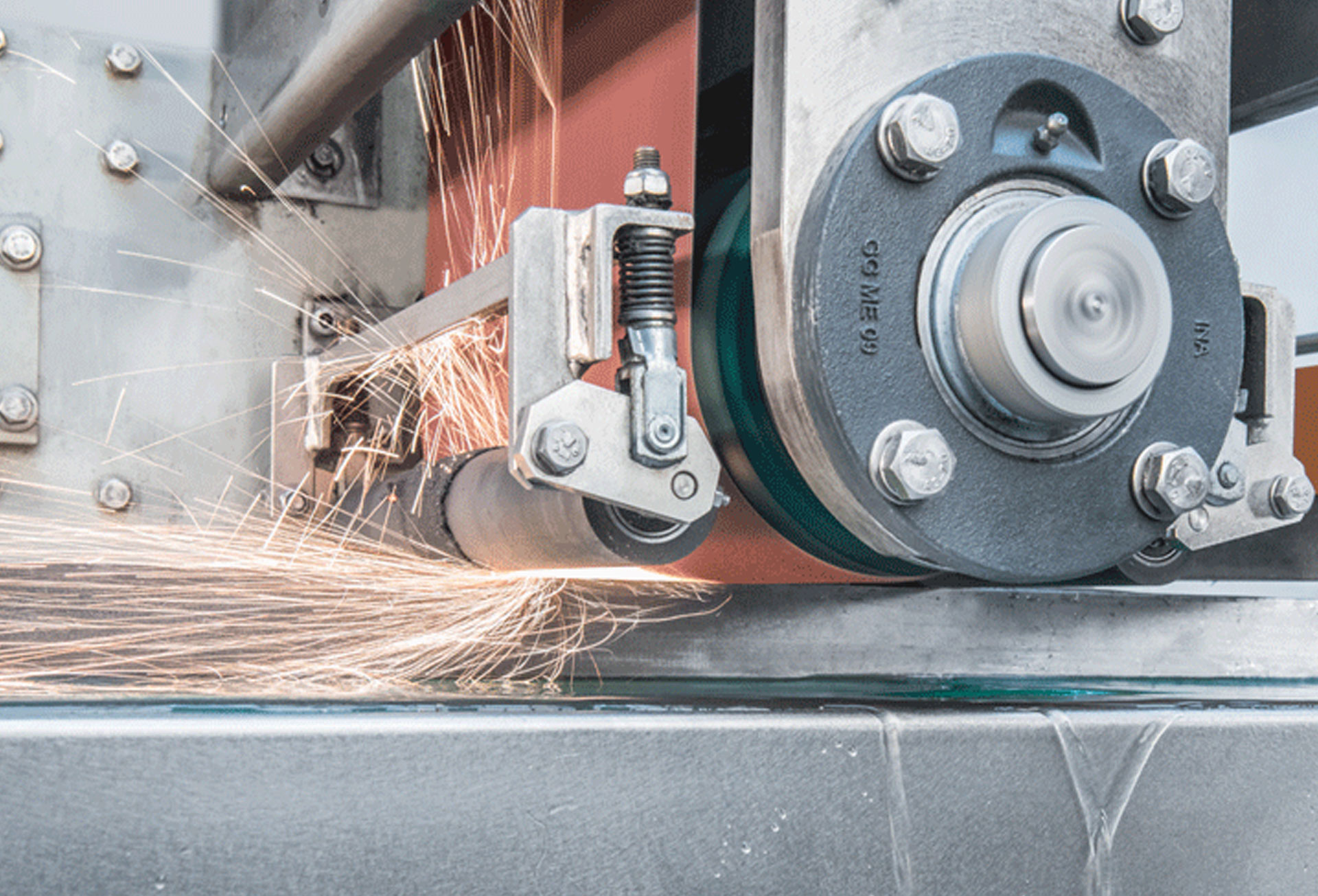Belt grinding is a material removal process that uses a coated abrasive belt to grind, smooth, and finish metal surfaces. It is one of the most efficient and versatile finishing operations used in metalworking, especially in industries that demand high surface quality and precision — such as automotive, aerospace, and beauty instrument manufacturing.
In this process, a continuous abrasive belt, usually made of aluminum oxide, zirconia, or ceramic grains, is mounted on a rotating machine with at least two or more pulleys. One pulley drives the belt while the other(s) maintain tension, allowing the abrasive surface to make consistent contact with the workpiece. As the belt moves at high speed, it removes material from the surface through friction and abrasion, refining its texture and shape.
Key process parameters such as belt speed, contact pressure, feed rate, and grit size determine the material removal rate and surface finish quality. Coarser belts (low grit numbers) are used for heavy stock removal, while finer belts (high grit numbers) are used for polishing and finishing operations.


